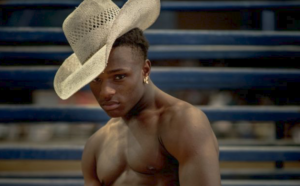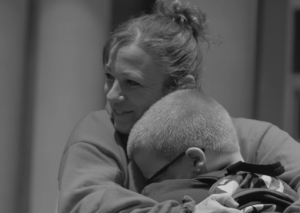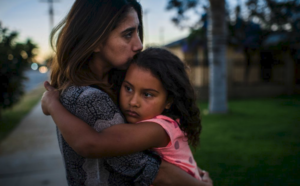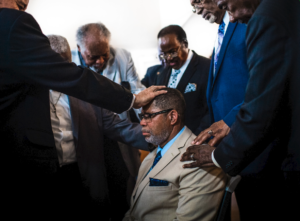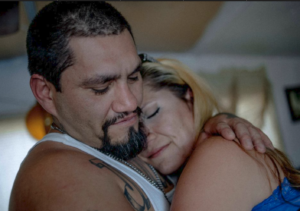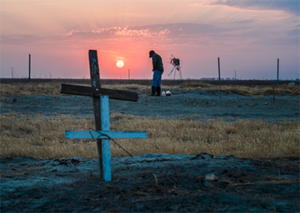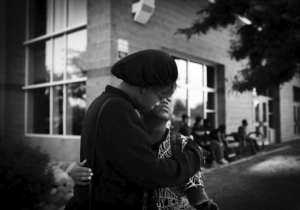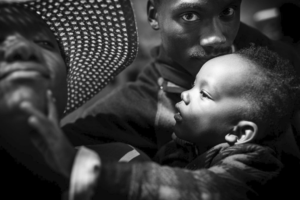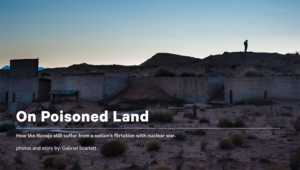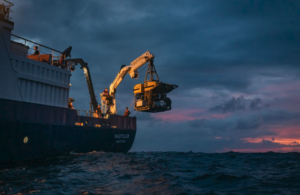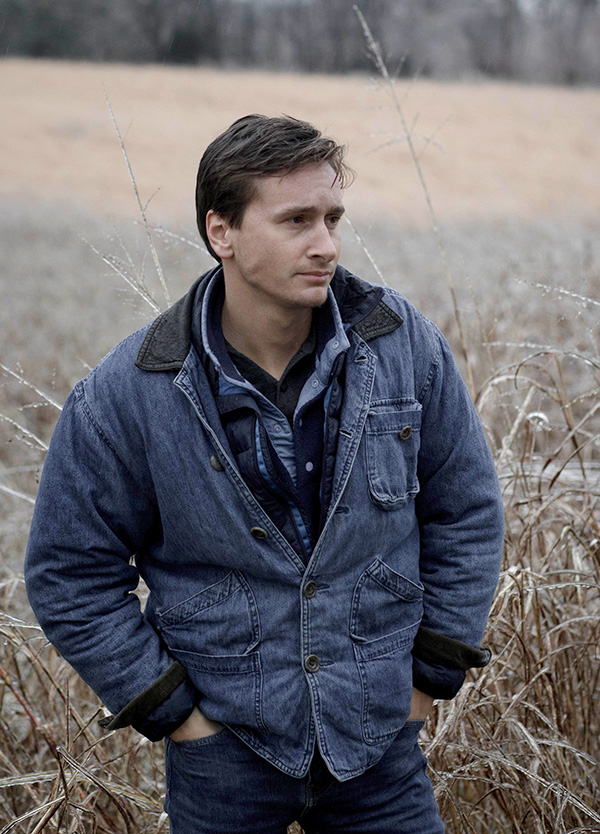
Gabriel Scarlett
Gabriel Scarlett, undergraduate from Western Kentucky University, won the Bob East scholarship.
Among Scarlett’s accomplishments are:
Experience
National Geographic Magazine – Summer Photo Internship – 2019
Los Angeles Times – Summer Photo Internship – 2018
The Denver Post – Summer Photo Internship – 2017
Philmont Boy Scout Ranch – Summer Photo Internship – 2016
Eddie Adams Workshop – Attendee – 2019
New York Times Portfolio Review – Attendee – 2018
WKU Emergency Medicine Course – EMT-Basic Certification – 2019
Northern Short Course – Attendee 2016, ’18 – Volunteer ’17
Mountain Workshops – Attendee 2016 – Volunteer 2015, ’17
Atlanta Photojournalism Seminar – Attendee 2015, ’16, ’17, Workshop Speaker ’19
Grants & Scholarships
Alexia Foundation – Student Grant Award of Excellence
Reuters Projects Grant – Storytelling Grant Recipient
Atlanta Photojournalism Seminar – Dave Martin Student Projects Grant
WKU Journalism Department – Student Projects Grants – 2016, ’17
National Press Photographers Foundation – Jimi Lott Scholarship, C. Thomas Hardin and Mary C. Hardin Documentary Scholarship, Bob Baxter Scholarship
Northern Short Course – Michel du Cille Memorial Scholarship
WKU Photojournalism Dept. – Kodak Scholarship, George Tames Scholarship, David Cooper Scholarship
James Alan Cox Foundation – Photojournalism Scholarship
Mountain Workshops – Jon Woods Scholarship
Western Kentucky University – Full-Ride Scholarship as a National Merit Finalist
Honors
Atlanta Photojournalism Seminar – Featured Workshop Speaker on Long-form Storytelling
2020 PDN’s 30: New and Emerging Photographers to Watch – Nominated (currently being judged)
74th College Photographer of the Year – Bronze in Int. Picture Story, Multimedia Team
73rd College Photographer of the Year – Gold Portfolio, awards in General News, Feature
72nd College Photographer of the Year – AoE Portfolio, award in Portrait, Documentary
71st College Photographer of the Year – Award of Excellence in Feature
NPPA – Best of Photojournalism – Emerging Vision Portfolio Winner
Atlanta Photojournalism Seminar – Student Photographer of the Year – 2017, ’18
Kentucky News Photographers Association – Student Photographer of the Year – 2018, ’19
Kentucky News Photographers Association – Ed Reinke Best In Show Award – 2017
2019 Hearst Awards – 1st Place in Photo I, 1st Place & 3rd Place in Team Multimedia
— Finalist at the National Championship in San Francisco
2018 Hearst Awards – 1st Place Multimedia Team
—3rd Place National Championship in San Francisco
2017 Hearst Awards – 2nd Place in Photo I, 2nd Place Multimedia Enterprise
—2nd Place National Championship in San Francisco
The GroundTruth Project – Emerging Photographer Feature
News Photographer Magazine – Photographer Interview & Feature
Career Goals
Having spent a summer at National Geographic, I can safely say that my long term goal is to one day work on in-depth stories for the Magazine with special interest in social justice and environmental issues. I was in the South Pacific for much of my internship and witness firsthand the effects of climate change and sea level rise on already impoverished communities in Kiribati and Tuvalu, and I know that I eventually hope to tell stories on this topic both in the Pacific and around the world.
In the more immediate future, I hope to work at the New York Times through their new year-long Fellowship program. One year working for the best newspaper in the world in one of the most incredible cities in the world would certainly hone my skillset as a photographer and a thoughtful journalist.
If I do not receive the Fellowship, I will be looking to freelance or find a permanent position at a newspaper somewhere around the country. I do not, however, want to become stagnant and I will always be pursuing personal projects alongside my assignment work as I have done for the past four years.
Portfolio
Click on pictures to see stories.
California is Burning
A summer spent in California revealed to me a state and a people burning with color and life. Assignments and simple wanderings brought me close to the flame. It burned itself into me and these photographs are my incomplete record of a place so vast that I will always long for more. Until I return to that heat, I know that California will burn on without me.
The Pain We Cause
In a Kentucky jail, Amy McCowan prepares for her release after 7 months of incarceration. On the outside, her mother and son await her return.
Project role: Done as a team project with my classmate Morgan Hornsby. We both shot and edited the piece.
The Wrongful Imprisonment of Jose Luis Garcia
Jose Luis Garcia was picked up from his lawn early in the morning on a Sunday in June. Garcia has lived in America for nearly fifty years and holds a green card, but due to recent Trump administration policies, a misdemeanor conviction from 17 years ago made him eligible for deportation. Critics of the policies say that in a supposed effort to round up dangerous criminals and gang members, innocent immigrants are being swept up by ICE agents because they take fewer resources to arrest and deport. Through his 19 day imprisonment, his daughter Natalie fought for his release through the media. Prosecutors ultimately declined to pursue deportation charges, in an unprecedented decision change. According to Jose’s legal representation, they were contacted asking to have the case “go away quietly.” Since his release, Jose has returned to his three jobs and caring for his family and granddaughter Marley. His greatest wish is to become a full US citizen and be able to vote in the next presidential election.
World Pass Us By
Flock of Doves
The palomilla, a Spanish word meaning “flock of doves,” were groups of young Mexican men who banded together for solidarity and fraternity. These were the precursors to the the Latino gangs of the American Southwest, that kill for pride and territory in cities like Los Angeles and Oakland and Pueblo, Colorado. Pueblo is a city that has seen the loss of over 5,000 steel manufacturing jobs since the 1960s, and the gangs have become a reality faced by much of Pueblo’s youth. Police have identified more than 1,000 gang members within Pueblo, roughly nearly two percent of its population. The murder rate has soared, pushing it to the highest per capita in the state. Police Chief Luis Velez attributes this to gang rivalries over the gun trade and the exploding drug market. But what is often lost in most narratives on gang violence is a community of voices demanding change. Frontline churches welcome gang members, addicts, and dealers while former gang bangers have begun to mentor the youth and steer them away from repeating their pasts. Mothers and fathers who raise babies in gang territory speak of a sacrificial love that they must model for their children who are recruited by the gangs as early as 10 and 11. These images are of and for them.
An African American farmer's Central Valley dream
Dennis Hutson is attempting to revitalize the once-predominantly African American town in California’s Central Valley.
Project role: Found, shot, and wrote the story.
On the Brink
Shawn and Taneka Hill brought their children to Colorado for a better life and for Shawn to find steady construction work. Despite his skill level and $25/hr wages, Shawn was never able to get his family in permanent housing and they shared a one bedroom unit at the Kings Inn Motel. The surge in housing prices has kept thousands in Denver area from escaping homelessness. For over a year, the Hills enjoyed the close knit community at Kings until new ownership took over and rent was increased several times. The evictions soon began and the they found themselves struggling to survive, moving from one motel to another. A family, on the brink.
Singles
Singles are photographs that are unrelated.
On Poisoned Land
On July 16, 1945, the first atomic bomb detonation took place in a test explosion near Socorro, New Mexico, setting into motion an arms race that needed one main raw ingredient: weapons-grade uranium. Land in the American Southwest that was made up of barren desert scrub brush and sandstone mesas was found to be incredibly rich in uranium ore. The people of the Navajo Nation sat on some of the largest uranium deposits in the world. Hundreds of mines were opened and a boom began. But as is so often the case with indigenous populations, the vast majority of Navajos did not benefit from their own natural resources and unemployment now rests above 40 percent. Decades of irresponsible mining, chemical dumping, and radioactive spills have left large swathes of the Navajo Nation with crystal clear, yet contaminated and undrinkable ground water.
More than a decade has passed since the last uranium was mined on Navajo land, but the death and disease it brought is far less removed. Over 30,000 sick Navajo miners have been compensated under the Radiation Exposure Compensation Act that awards a cash sum to those who can prove that they are sick or dying from their time spent working in the mines. Many more will die in the coming years, but their legacy is lost on much of the country. The president has called for a second nuclear arms race as miners still die from the first.
In Navajo tradition, four sacred mountains are said to mark the edges of the Navajo’s land and are believed to watch over the people. In one prayer, the four mountains speak to the Navajo saying: “My child I will feed you, give you good health, and I will give you strength and courage. My child I will give you clean air and clean water to drink. I am your Life.” But from beneath the mountains on the Navajo Nation Reservation have come some of the richest deposits of uranium in the world, and with them sickness, suffering, pain, and loss. Today, the Navajo know this bitter irony all too well. They live it.
Search for Amelia
The fate of the famed aviator Amelia Earhart has fascinated millions for over 80 years. After setting world records in her plane–most notably her solo crossing of the Atlantic in 1932–Earhart set her sights on the circumnavigation of the globe at its widest point, the equator.
On one of the final leg’s of her round-the-world flight, Earhart and her navigator Fred Noonan disappeared over the Pacific, somewhere in the Phoenix Islands. Thousands of hours of research and countless dead-end clues have pointed to Nikumaroro island, a small coral atoll, as her final resting place. In August, 2019, a National Geographic expedition led by Dr. Bob Ballard (who famously discovered the Titanic) set out for Nikumaroro. Two teams searched the island and its surrounding waters for two weeks, but found nothing. Expeditions like this one will likely continue until some definitive evidence is found that can lay the final chapter of Amelia’s story to rest.

